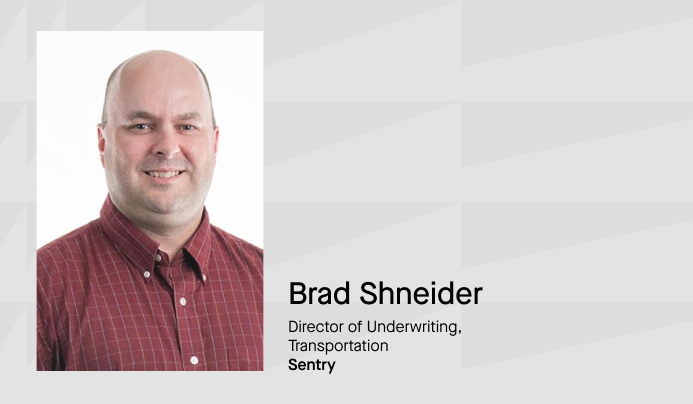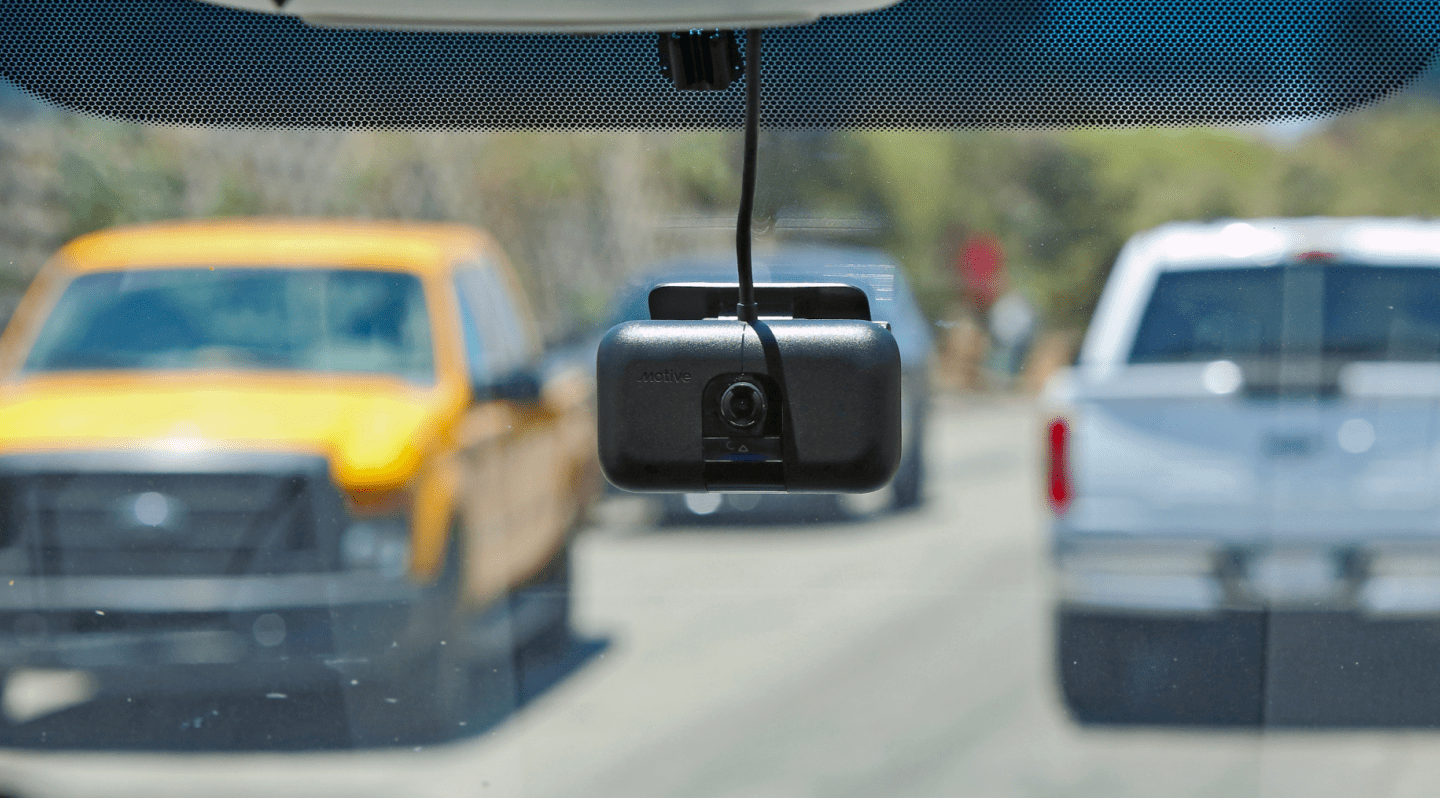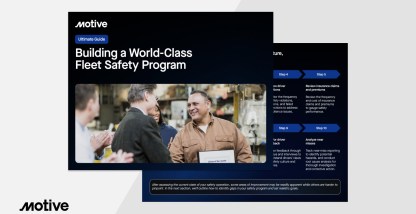Like so many other things, fleet insurance costs have soared in the last few years. According to the American Transportation Research Institute (ATRI), premium costs per mile have risen 47% in the last decade, climbing from 5.9 cents to 8.7 cents. A combination of accident rates, higher repair costs, and litigation have created a challenging environment for both fleets and insurers.
As a result, Sentry — which insures more than 48,000 units throughout the United States — has been working closely with customers to help them manage risks, and in turn, control costs. We recently spoke with Daniel Grant and Brad Schneider from Sentry to learn more, including how Motive and Sentry customers can use AI dash cams to lower their rates.
What’s driving up fleet insurance costs?
Higher fleet insurance costs are partially the result of “nuclear verdicts,” as multimillion-dollar judgments against motor carriers are handed down more frequently. In 2021, a Florida jury awarded a landmark $1 billion verdict in a wrongful death case involving two trucking fleets. Even if money is never collected in the case, the judgment shows that juries believe huge rewards like these are warranted.
Questionable tactics like the “reptile theory” are driving up fleet insurance costs, too. Trial lawyers play on jurors’ emotions to award excessive judgments to the plaintiff. Other times, they pressure insurers to put up policy limits of $1 million or more, even when fault has yet to be determined. And if they don’t?
“The window to negotiate a settlement may close, and we may be faced with a demand or judgment well above the policy limits,” says Grant, Sentry’s Corporate Director, Safety and Loss Control Services.
As claim costs grow, insurers are exiting the commercial fleet market altogether. Those remaining are becoming more selective about the fleets they insure. The decline in insurers is driving up rates, along with nuclear verdicts, accident costs, and inflation.
“When one of our insureds gets into an accident and has vehicle damage, it will cost significantly more to fix compared to just a few years ago,” Grant says. “Additionally, it may take much longer to repair, due to ongoing part shortages. With thousands of accidents a year, insurers have to pass on a portion of unexpected costs through increased premiums.”
Fleet insurance costs are increasing in all sectors
According to ATRI, almost all motor carriers experienced substantial increases in fleet insurance costs between 2018 and 2020, despite higher deductibles and improved safety. “Premiums increased across all fleet sizes and sectors, with small fleets paying more than three times as much as very large fleets on a per-mile basis,” Heavy Duty Trucking notes.
“After an accident, it’s expensive to put people and vehicles back together again,” explains Schneider, Sentry’s Director of Underwriting, Transportation. “In addition to physical damage from an accident, medical costs to cover bodily injury have skyrocketed. When a truck is involved in an accident, it’s expensive. Themes like these are putting pressure on the trucking industry, creating a costlier environment.”
Higher premiums get passed along to consumers in the form of pricier goods and services. As a result, fleets are paying more for used vehicles, repairs, parts, fuel, and so much else.
“For the last few years, fleets have been dealing with an increase in costs, from fuel to maintenance to equipment,” Schneider says. “They’re paying more to hire and retain drivers, and to keep their vehicles moving. Customers keep asking, ‘Are fleet insurance costs coming down at some point?’ But inflationary pressures are still out there, and that’s keeping premiums high.”
In this environment, the exoneration power of AI dash cams is more valuable than ever. Even aggressive legal tactics are no match for the power of video. AI dash cams are a strategic tool, especially for commercial fleets and drivers. In fact, the AI dash cam may be fleets’ greatest hope for driving down insurance costs. Here’s how to go about it.
Invest in AI dash cams to earn insurance discounts
To help drive safety and lower costs through telematics, Motive and Sentry Insurance have partnered to incentivize customers with lower insurance premiums. Customers who use Motive’s Driver Safety Solution can see insurance premium savings of up to 5% when they share their Vehicle Gateway-captured telematics data with Sentry. For large fleets, a 5% cut in insurance rates can save $10,000 or more. In addition to insurance savings, fleets could experience a reduction in accident frequency, further enhancing their ROI.
This exclusive benefit for Motive-Sentry customers puts fleets in position to reduce risk and lower their rates. Customers who take advantage of the insurance discounts will share their ELD and AI dash cam data with Sentry. Sentry will then be able to analyze the data and understand the connection between fleet safety performance and risk levels over time.
“We use CSA scores and loss information to analyze safety and compliance trends,” Grant says. “Understanding these trends gives us a more accurate picture of fleet risk. We’ll be able to determine which fleets are performing well and which have room for improvement.”
Use AI dash cams to coach drivers and prevent accidents
Fleets that make AI dash cams and driver coaching part of an integrated risk management strategy are earning lower insurance rates.
“Just having AI dash cams doesn’t mean you’ll improve safety performance,” Grant says. Fleets see the best results when they use AI dash cams to coach drivers to improve. It’s important, however, to have a foundational safety management program already in place.
AI dash cams, like the one Motive offers, can be used to proactively coach drivers in a few ways. For example, whenever a rolling stop or cell phone event occurs, in-cab alerts prompt the driver to correct the unsafe behavior as quickly as it happens. That means the driver can correct unsafe habits in real time, before an accident occurs.
Through the Motive Driver App, self-coaching tips are automatically sent to the driver, allowing them to review the tips on their own — without manager intervention. If an event captured by the Motive AI Dashcam warrants more discussion, fleets can reinforce positive driving behaviors during an in-person coaching session.
“Companies looking to lower fleet insurance costs must first lower their accident rates — and coaching is a great way to do that,” Schneider says. Motive data shows that AI dash cam customers who frequently coach experienced an average of 50% fewer accidents, and up to 80% fewer accidents, than those who don’t coach.
“An AI dash cam reveals who’s driving risk in your fleet, but you can’t just set it and forget it,” Schneider cautions. “Installing AI dash cams and not coaching drivers to improve, not having driver meetings or a thorough onboarding process, will lead to disappointing results.”
As an insurance provider, Sentry rewards fleets that improve safety performance over time. Fortunately for Motive customers, the Safety Score makes it easy to spot safety improvement over time. One glance at the Safety Score, displayed prominently in the Motive Fleet Dashboard, and you can see if fleet safety is improving or declining.
Motive’s 2023 State of Safety Report showed a direct correlation between driver safety programs and insurance savings. Forty-four percent of organizations with driver safety programs reduced their insurance costs.
“For the fleets experiencing lower accident frequency, it’s usually an indicator that they’re managing safety really well,” Grant explains. “For us, that’s a sign that the insured is addressing their own risks. Those are the fleets we want to do business with. Those are the fleets who enjoy lower rates.”
Use AI dash cams to exonerate drivers from liability
For commercial fleets, avoiding a big claim isn’t easy, even when the commercial driver is innocent. Since commercial drivers have the larger vehicles, they’re often assumed to be at fault in an accident. Passenger car drivers often see an opportunity to make money from fleets with “deep pockets.” In light of this trend, fleets should protect themselves with AI dash cams.
“When you have video evidence showing your driver isn’t at fault, it can eliminate or reduce any payout, potentially saving millions,” Schneider says. “Having AI dash cam footage in your corner clears up any question about who’s at fault. You have recorded video that shows, indisputably, that your driver isn’t to blame. As AI dash cams exonerate more commercial drivers, the greatest savings will come from the payouts that fleets don’t have to make.”
Even if the dash cam shows your driver is at fault, “there’s still a large savings from a claims handling standpoint,” Schneider says. “Less investigative work is required, and the claim gets resolved faster.”
As drivers see firsthand how AI dash cams exonerate them from wrongful blame, their acceptance of dash cams is growing.
“Drivers have become more comfortable with having AI dash cams in their vehicles,” Grant says. “If you look back six or seven years ago, fleets had a much harder time convincing drivers that dash cams support them. Now drivers are seeing how AI dash cams protect their reputation and help them advance in their careers.”
About Sentry
Sentry insures more than 7,000 trucking customers and 48,000 units. Learn more about Sentry’s commercial trucking insurance here. To enroll in the Sentry and Motive telematics partnership, submit inquiries at sentry@gomotive.com.


The Motive AI Dashcam
New research shows the value of implementing AI-powered safety solutions. Check out Motive’s 2023 State of Safety Report to learn more. And if you’re ready to lower your insurance premiums and take your safety program to the next level, request a demo today.










